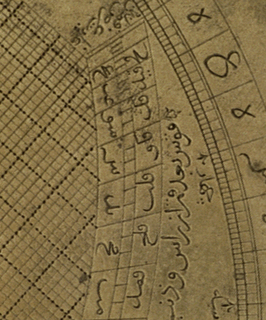Cynic fondles lunar data
Technorati tags: Islam, Hijra, Calendar, Dysfunctional
 It's usually about this time - every 12th lunar cycle - Walski gets to thinking about calendars and stuff. He can't really say "this time of year" per se, because these thoughts come at different times during a solar year - each time usually about 11 days short of a year apart, to be precise. More on that as we stumble along, though, folks.
It's usually about this time - every 12th lunar cycle - Walski gets to thinking about calendars and stuff. He can't really say "this time of year" per se, because these thoughts come at different times during a solar year - each time usually about 11 days short of a year apart, to be precise. More on that as we stumble along, though, folks.
But for all it's worth, for those who choose to observe today, Happy 1430 AH. A tad bit belated, of course, but still 11 days earlier than last year.
The most popular historical anecdote pertaining to the creation of the Hijri Calendar dates back to the reign of the second guided Caliph, Umar ibn al-Khattab, when a letter from the Governor of Basra triggered the Caliph to thinking about numbering the years, instead of sticking to the then custom of naming the years according to the most significant event. This happened circa 638 AD (source: Witness-Pioneer.org).
Although there were already functioning calendars at the time - the pre-Islamic Arab, Julian and Persian calendars, at the very least - by consensus, it was decided that a unique calendar be devised. Some may observe that the desire to be exclusive and different dates back to even then, but nevermind. So the consensus became that the new calendar would begin in the year of the retreat from Mecca to Yathrib (Medina), approximately 17 years earlier.
But the actual day of the hijra (or retreat) was not set as Day 1 of the new calendar - instead, it was back-dated to the first day of the customary first month, Muharram.
In other words, the starting point of the hijra calendar is completely arbitrary.
(bouncing along the seasonal timeline, and more, in the full post)
But that's okay, because all calendar systems start from arbitrary points in time, according to the how that date/day is significant to the respective culture the system belongs to. It is, however, important to note that 1st Muharram 1 AH is not the date that Prophet Muhammad's migration started (or ended). The actual date the prophet arrived in Medina is somewhere in Rabi 'al-awwal of that year.
So, Muharram 1st is merely symbolic of a symbolic event that happened some two months later, and not the actual symbolic event.
Now, the general belief of why the Hijri calendar has to be purely lunar is based on interpretations of what was revealed in the Quran, among others, verses 36 and 37 of Surah 9 (Al-Tawbah, Yusuf Ali translation, emphasis by myAsylum):
[9:36] The number of months in the sight of Allah is twelve (in a year) - so ordained by Him the day He created the heavens and the earth; of them four are sacred: that is the straight usage. So wrong not yourselves therein, and fight the Pagans all together as they fight you all together. But know that Allah is with those who restrain themselves.
[9:37] Verily the transposing (of a prohibited month) is an addition to Unbelief: the Unbelievers are led to wrong thereby: for they make it lawful one year, and forbidden another year, in order to adjust the number of months forbidden by Allah and make such forbidden ones lawful. The evil of their course seems pleasing to them. But Allah guideth not those who reject Faith.
There is a reason why portions of the two verses have been highlighted, and is central to why Walski thinks about calendars around this time.
According to 9:36, God's master plan calls for 12 months in a year. Okay... no problems with that. What the Hijri calendar does, however, is to ignore altogether the orbit of the Earth around the Sun.
The way the seasons operate, and the corresponding behavior of nature, as it turns out, follows seasonal changes. And these seasonal changes have to do with the Earth's orbit around the Sun. It would be pretty safe to assume that all this is also part of God's master plan.
The Hijri calendar is not the only calendar system that uses the phases of the Moon as a basis. But most other systems adjust the number of days to re-synchronize the calendar to the Earth's orbit around the Sun, such that seasonal changes are predictable within a specific range. In cosmology terms, this exercise is called intercalation. One example that most of us are probably most familiar with would be the Chinese calendar. The periodic re-calibration of the calendar, therefore, makes the Chinese system a more practical one when it comes to practical things, like agriculture, for instance.
Now, it has been long understood that the reason the Hijri calendar is a purely lunar one is due to the prohibition of adding an intercalary month (as revealed in 9:37). But is necessarily intercalation that the verse refers to?
Based on our somewhat safe assumption that seasonal changes are also part of God's master plan, doesn't the Hijri calendar also make some "months" prohibited in some years, and allowed in other years (since the Hijri calendar cycles through the solar year, 11 days earlier than the previous year)? Aren't the equinoxes and solstices also natural time markers that happen in predictable periods, and therefore part of the master plan as well?
The four prohibited months, in pre-Hijri calendar times, are believed to have coincided with the period of end-Summer to Fall/Autumn (in the Northern Hemisphere). Apart from the prohibition of fighting during these months, hunting wild game is also prohibited (as alluded to by verses 1, 2 and 96 of Surah 5 [Al-Ma'edah]). This makes perfect sense, since end-Summer/Autumn is usually when wild animals reproduce, and therefore the prohibition on hunting is for conservation purposes.
But with the current Hijri calendar, the four prohibited months now traverse the seasons, and in effect, does exactly what 9:37 prohibits. Or at least, that's how it appears to Walski. From what he understands, though, going by the Yusuf Ali translation of 9:36, the prohibition is on "transposition" (which according to many historical anecdotal sources was practiced in pre-Hijri times in Arabia, to make the pilgrimage to Mecca "happen" at more favorable times of the year). Other translations mention "transposition", too. None, to Walski's knowledge, mentions intercalation explicitly, but that's how it's been understood.
Another idiosyncrasy of how the Hijri calendar is implemented is in the general accepted fact that actual moon sightings are required to determine the actual start of a month. Traditionally, anyway. Which made the calendar, at any given time, only valid for one month, and worse, having the month start on actual different days, depending on where you are in the Islamic world. Hence, the phenomenon of having important observance days fall on different days - sometimes as many as 3 days apart - something which still happens quite regularly even now.
Part of God's plan, too? That question, however, Walski cannot answer, so let's not even go there...
The point is that the "Islamic" calendar that we have today can be considered somewhat dysfunctional, as it's sole purpose is to predict important religious observance days, and even that, only barely.
Which is a good thing that the "real" world operates on a different calendar system - the Gregorian calendar - which, while not perfect either, is definitely more predictable. In as far as how nature operates, that is.
Well... so much for this round of calendarific ponderances... at least for another year. Oh, and minus 11 days.
Walski's post title de-mystification footnote: In case you were wondering why the strange title for this post, it is actually an anagram of "dysfunctional calendar". These two words alone produce countless anagrams that Walski worked out (with assistance from software tools), including:
- A funny rectal dildo scan
- Funnily clad DNA coaster
- Funny rat candle al disco (which would've been the alternate choice)
- Accidental non sly fraud (which would've gotten some people on Walski's ass quite likely)
- Fractal nude candy lions
... and a whole host of other equally silly anagrams. The one Walski eventually chose is the one he thought most appropriate for the post contents...
















